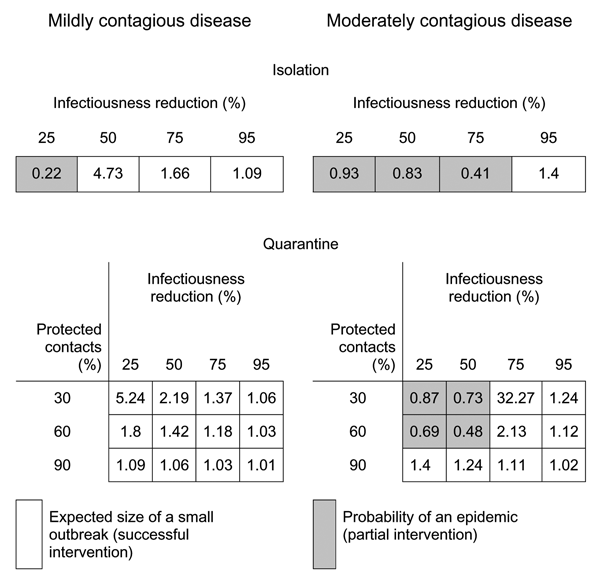Volume 11, Number 8—August 2005
Research
Modeling Control Strategies of Respiratory Pathogens
Figure 4

Figure 4. . Comparing the effect of isolation and quarantine. Isolation alone reduces the infectious period by a specified percentage. Quarantine involves both isolation and sequestering a fraction of all case contacts. See the Figure 3 caption for further details.
1These authors contributed equally to this work.
2For the purposes of this manuscript, "airborne" refers to respiratory pathogens that are spread through respiratory secretions and can be either airborne, such as tuberculosis, or dropletborne, such as SARS.
Page created: April 23, 2012
Page updated: April 23, 2012
Page reviewed: April 23, 2012
The conclusions, findings, and opinions expressed by authors contributing to this journal do not necessarily reflect the official position of the U.S. Department of Health and Human Services, the Public Health Service, the Centers for Disease Control and Prevention, or the authors' affiliated institutions. Use of trade names is for identification only and does not imply endorsement by any of the groups named above.